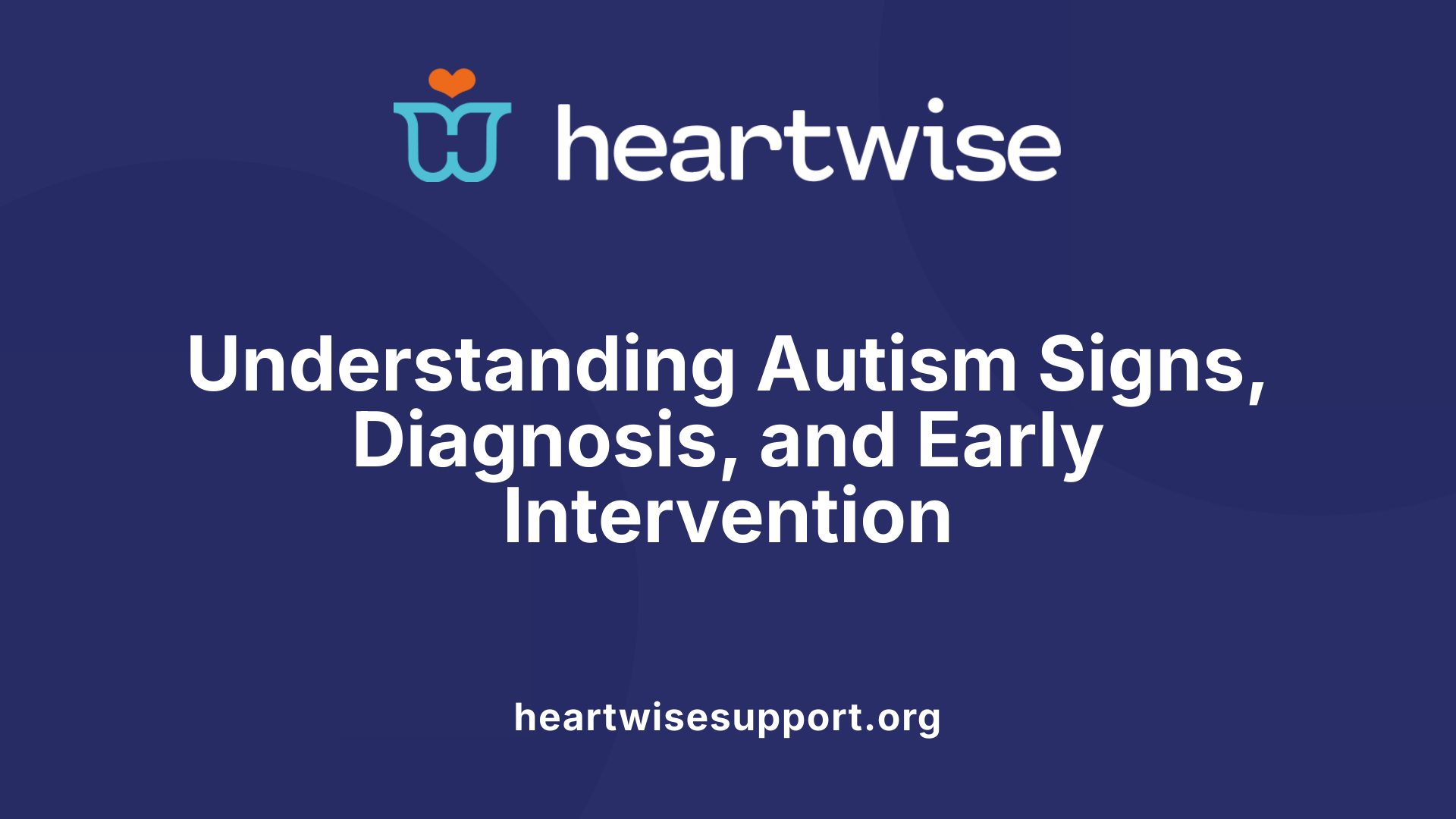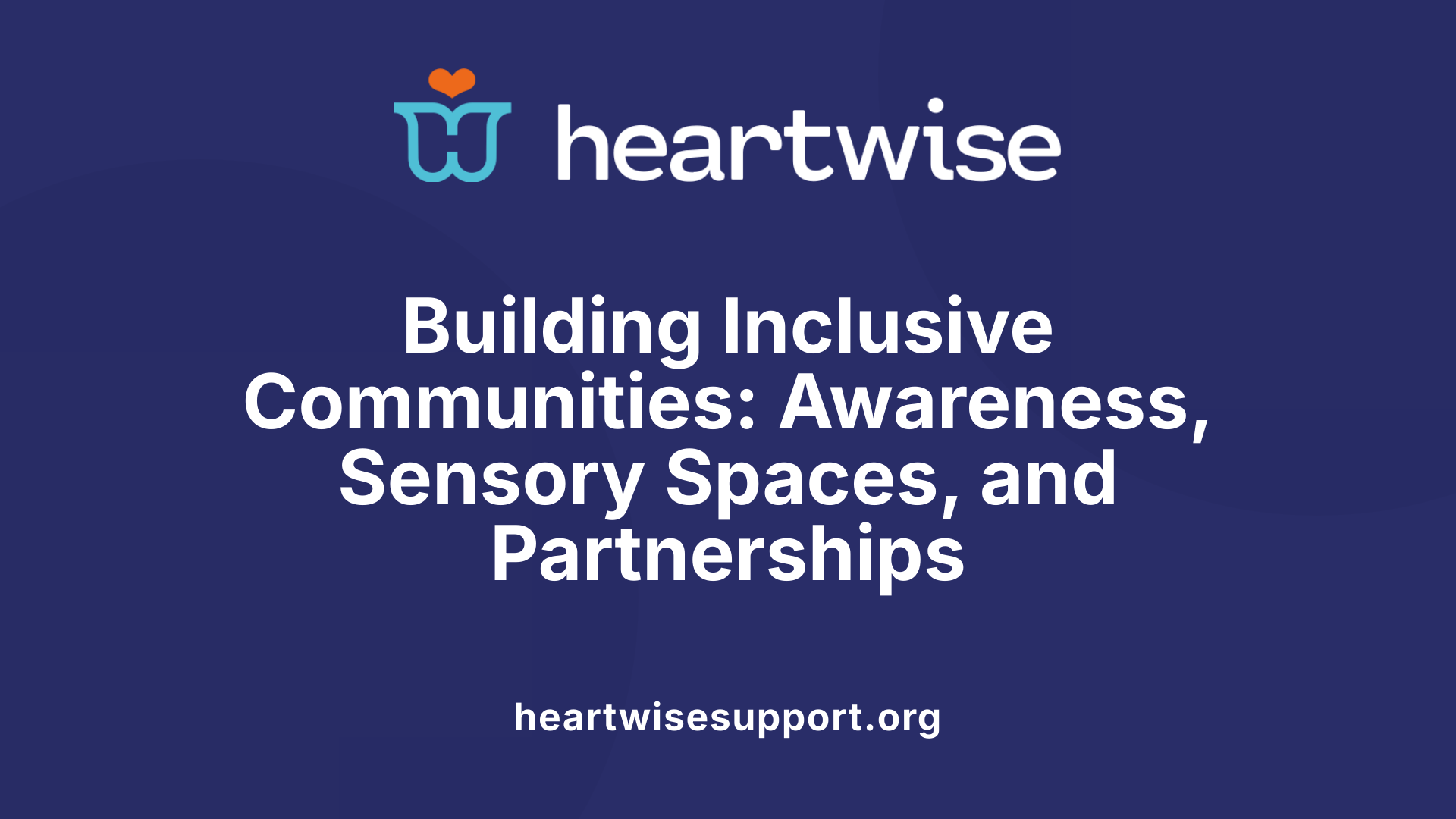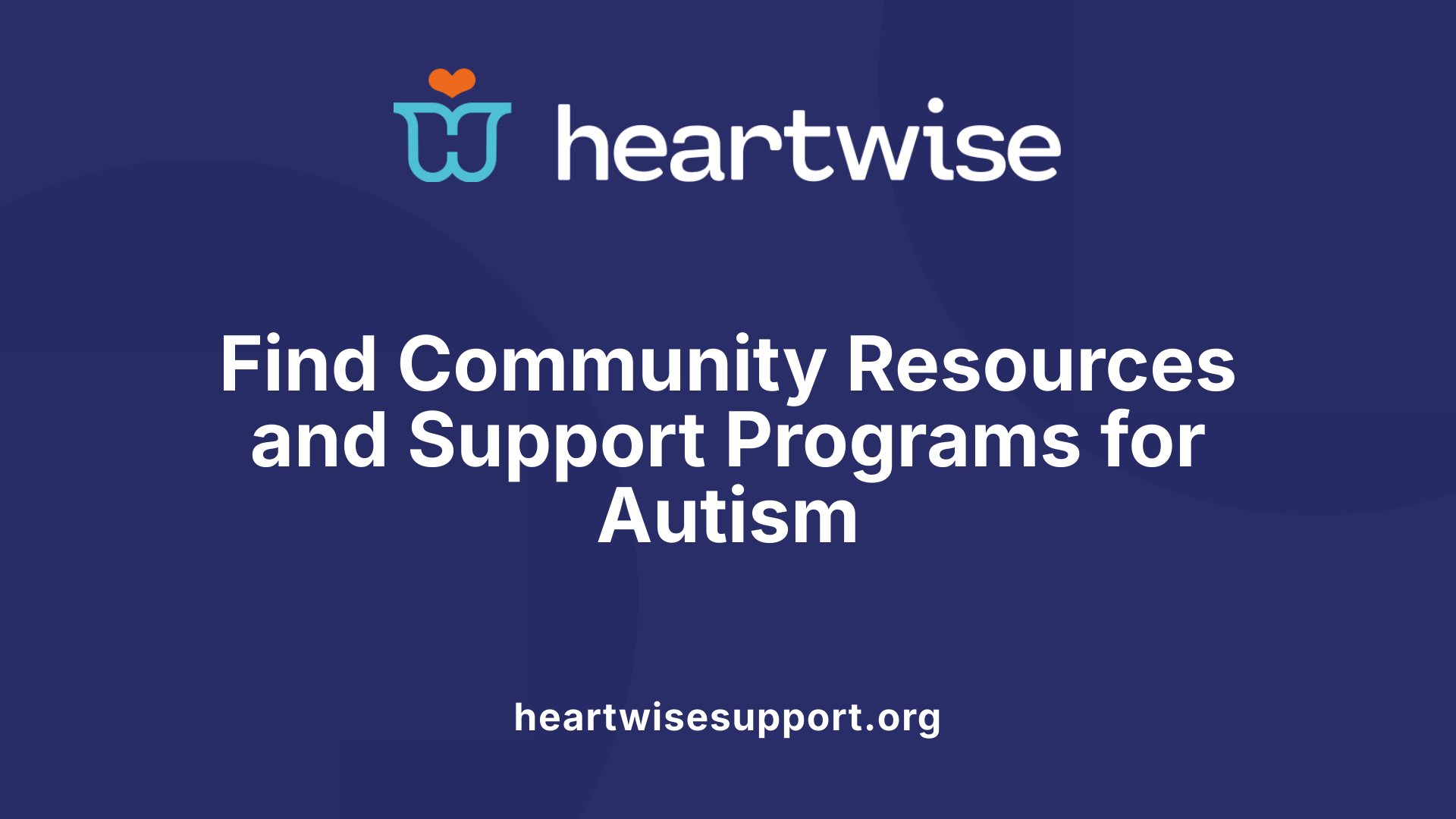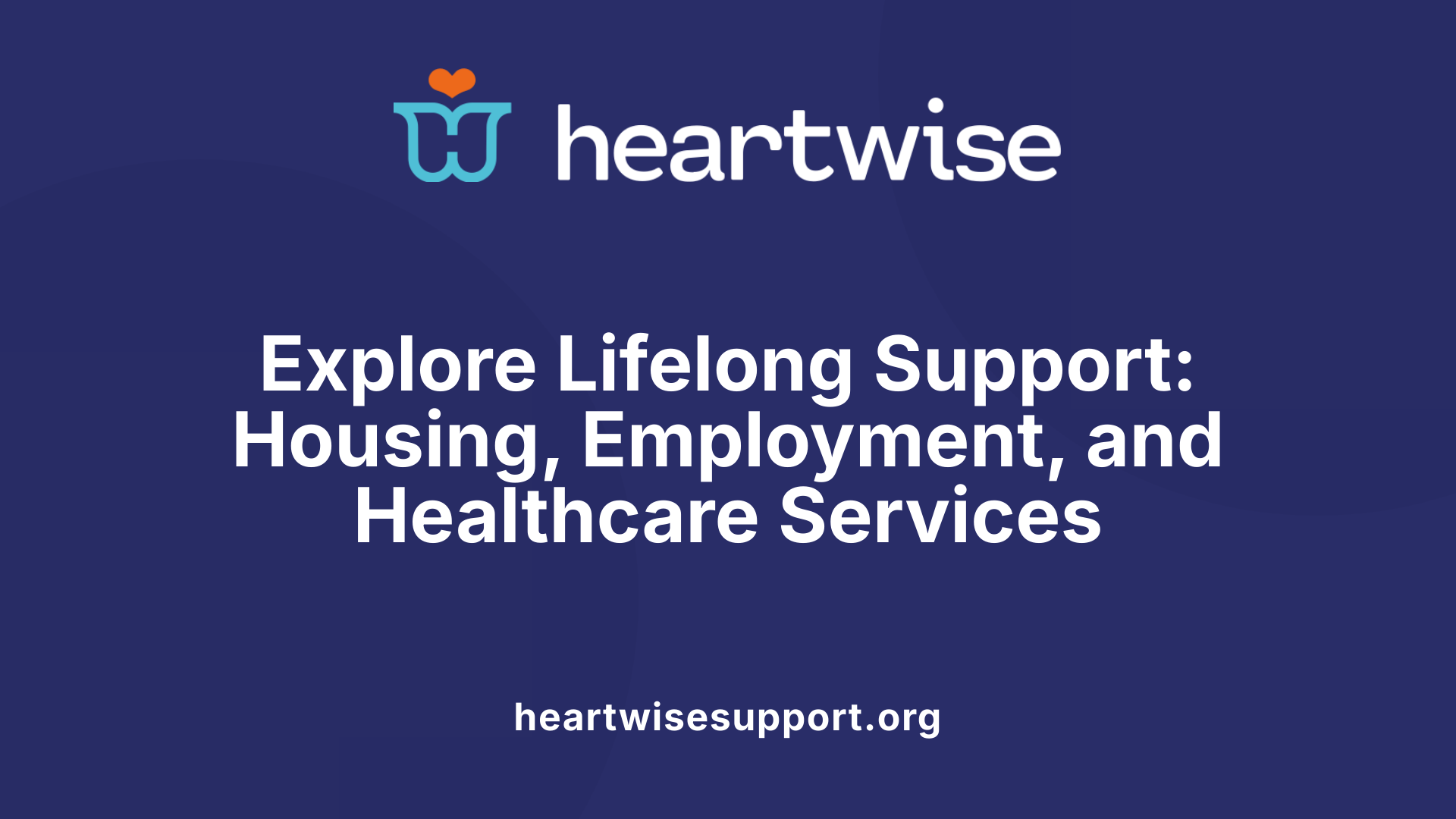Understanding Community Resources for Autism Across All Life Stages
Autism spectrum disorder (ASD) is a lifelong neurodevelopmental condition affecting social interaction, communication, and behavior. Support for individuals with autism is essential from early diagnosis through adulthood, necessitating robust community resources that promote inclusion, independence, and quality of life. Various organizations, programs, and policy initiatives work collectively to provide services tailored to the changing needs of autistic individuals and their families, ensuring comprehensive support throughout their lifespan.
Foundations of Autism Awareness and Diagnosis

Signs and symptoms of autism
Autism spectrum disorder (ASD) affects social interaction, communication, and behavior. Common signs in young children include delayed speech, limited eye contact, difficulty sharing interests, and repetitive movements. They might also show intense focus on specific interests or sensory sensitivities, such as distress from loud noises or certain textures.
In older children and adults, signs can manifest as challenges in forming friendships, trouble understanding social cues, and inflexibility regarding routines or interests. Recognizing these behaviors early can support timely intervention.
Early detection and diagnosis process
Most cases of autism are diagnosed before age three, although signs may appear earlier. Early detection involves developmental screenings by pediatricians or early intervention specialists who observe behaviors related to language, social engagement, and repetitive actions.
Diagnosis typically requires comprehensive assessments, including behavioral evaluations, medical history reviews, and observations by multidisciplinary teams. Clinical criteria from standardized tools like the Autism Diagnostic Observation Schedule (ADOS) and the Autism Diagnostic Interview-Revised (ADI-R) guide professionals.
Federal and state agencies offer resources to aid diagnosis, with programs like the CDC’s autism monitoring and the support from local regional centers. Early diagnosis enables access to educational, behavioral, and therapeutic services that significantly improve long-term outcomes.
Interventions and therapies available
Services for autism span from behavioral therapies such as Applied Behavior Analysis (ABA), speech and language therapy, to occupational therapy focused on daily living skills. Medical treatments may address co-occurring issues like anxiety, hyperactivity, or seizures.
Educational supports include personalized learning plans and classroom accommodations. Community-based programs also promote social skills development through peer interactions and structured activities.
Support for families involves parent training, support groups, and advocacy resources that empower caregivers to effectively assist their loved ones.
Resources such as clinical practice guidelines, community support directories, and online educational videos provide accessible information to families, individuals, and professionals. Organizations like the Autism Society and local regional centers are vital in offering ongoing support, training, and community engagement opportunities.
How can families and individuals learn more about autism spectrum disorder, diagnosis, symptoms, and treatments?
Families and individuals can deepen their understanding through trusted organizations such as Autism Speaks, which offers extensive educational resources about diagnosis, symptoms, and therapies. The Kinney Center and other advocacy groups provide training, community support, and research initiatives aimed at enhancing knowledge and services.
Government agencies like the Minnesota Department of Education and the IDEA law ensure access to educational evaluations, early intervention, and personalized planning across all life stages. Support groups and online platforms offer current updates and shared experiences, aiding in awareness and resource navigation. Community events and advocacy campaigns further improve knowledge about autism and help build resilient support networks.
What resources are available for autistic adults and how can they access support?
Adult support services are crucial, as many programs aimed at children do not extend into adulthood. Resources like the Autism Now Network, AANE, and local employment support organizations offer transition planning, job training, social groups, and housing resources.
Healthcare guides, self-advocacy tools, and policy initiatives provide adults with information to better navigate community living and healthcare. Support from professionals skilled in autism-related healthcare facilitates better communication about needs and options.
Tools such as transition planning guides and policy briefs enable autistic adults and their families to prepare for different life stages. Community programs also work to foster social inclusion, independence, and lifelong learning.
| Resource Group | Focus Area | Support Offered | Access Method |
|---|---|---|---|
| Autism Speaks | Community Resources | Diagnoses, therapy options, advocacy | Website, local office |
| Autism Society | Support and Advocacy | Support groups, training, events | Membership, online |
| Regional Centers | Lifelong Support | Education, employment, housing | Local offices |
| AANE | Transition & Employment | Job coaching, social skills | Online registration, community programs |
Supporting individuals with autism requires understanding their diverse needs throughout life. From early detection to adulthood, comprehensive services and community engagement are instrumental in fostering meaningful lives.
Promoting Inclusion and Fostering Community Acceptance

How can the community promote inclusion and awareness for individuals with autism?
Fostering acceptance and understanding in communities is crucial for supporting individuals with autism. One effective approach involves creating sensory-friendly environments where people with autism can participate comfortably. This includes modifications like quieter spaces, dimmer lighting, and reduced noise levels during events or in public spaces.
Organizing autism awareness campaigns is another vital strategy. These campaigns can include awareness months, community events, and educational programs that highlight autism spectrum disorder (ASD), dispel myths, and promote acceptance. For instance, hosting public talks, distributing informational materials, and sharing personal stories can help increase understanding.
Building strong partnerships among community organizations, schools, families, and local businesses creates a support network that fosters inclusion. These collaborations can develop adaptive programs, social skills groups, and inclusive activities that encourage participation from individuals with autism.
Training community members, educators, and service providers on autism acceptance and support strategies often leads to more empathetic and accommodating environments. Workshops on sensory sensitivities and communication tips enable volunteers and staff to better assist and include autistic individuals.
Advocacy is also essential. Community leaders can champion policies that promote accessibility and inclusiveness. Initiatives like the Autism Month campaigns or awareness rallies highlight the importance of acceptance and foster a culture of support.
In summary, promoting inclusion involves proactive steps such as sensory considerations, educational outreach, strong community partnerships, and advocacy efforts. When communities embrace diversity through empathy and flexibility, they help autistic individuals thrive as respected and integrated members of society.
Creating sensory-friendly environments
Designing spaces that minimize sensory overload benefits many with autism. Practical measures include:
- Quiet zones or retreat spaces
- Use of calming colors and lighting
- Clear signage with visual aids
- Incorporating sensory tools like weighted blankets or noise-canceling headphones
Organizing autism awareness campaigns
Public campaigns serve to educate and foster acceptance. Effective activities include:
- Social media initiatives sharing success stories and facts
- Community walks or festivals celebrating neurodiversity
- Distribution of brochures and resource guides at public venues
Building partnerships among community organizations
Combining efforts from local schools, nonprofits, healthcare providers, and businesses creates a comprehensive support system. Examples include:
- Cross-organizational training sessions
- Joint community events
- Collaborative advocacy for inclusive policies
| Strategy | Examples | Benefits |
|---|---|---|
| Sensory-friendly environments | Quiet zones, calming colors, sensory tools | Reduce anxiety and overstimulation, enhance participation |
| Awareness campaigns | Social media, public events, educational workshops | Increase understanding, reduce stigma |
| Community partnerships | School collaborations, nonprofit alliances, business sponsorships | Foster sustainable support, create inclusive opportunities |
By integrating these approaches, communities can nurture environments that recognize and respect individual differences, ensuring that everyone has the chance to engage and succeed.
Accessing and Utilizing Community Support Services and Programs

How can families and caregivers find community resources and support programs for autism?
Families and caregivers seeking support for autism can start by exploring well-established organizations that compile and share extensive directories of services. Notable organizations such as Autism Speaks and the Autism Society offer comprehensive online resource guides that include listings of local agencies, therapy providers, support groups, and early intervention programs. These organizations tailor their information to specific regions and age groups, helping families locate the services most relevant to their needs.
The Centers for Disease Control and Prevention (CDC) is another valuable resource that provides data tools and community support information, which assist families in identifying nearby programs, evaluations, and therapies. Whether it’s speech-language therapy, occupational therapy, behavioral interventions like Applied Behavior Analysis (ABA), or support groups, these sources enable families to make informed decisions.
Many online directories allow users to search by geographic location and radius, making it easier to find local providers and community-based activities. Additionally, state and local government agencies often maintain websites and helplines dedicated to supporting individuals with autism, offering resources such as respite care, employment supports, and educational services.
Community organizations involved in autism support often offer advocacy opportunities, educational workshops, and social events. These activities help families connect, share experiences, and build networks within their communities. For example, regional centers and local autism councils work closely with families to provide case management and linkages to other social services.
Participating in support groups, whether in person or virtual, is another effective way for families to access peer support, learn about resources, and advocate for their needs. Parent support groups and community events hosted by organizations like Autism Society chapters foster a sense of belonging and empower families.
By leveraging these resources—comprehensive directories, advocacy groups, and community events—families and caregivers can access the support services they need. They can also participate in advocacy efforts to influence policy changes that expand and improve community-based services.
Ultimately, utilizing existing community networks and organization-led programs strengthens the support system around individuals with autism. It enhances their inclusion and fosters a more accepting society where families feel supported in their journey.
Lifelong Support Structures for Individuals with Autism

What types of lifelong support services are available for individuals with autism, including housing, employment, and health?
Supporting individuals with autism across their lifespan involves a variety of services designed to enhance quality of life, foster independence, and promote community participation. These services include residential programs such as supported housing and group homes, which provide safe and stable living environments tailored to individual needs.
Day programs and community-based supports offer skill development, social interactions, and recreational activities. Respite care services also allow families and caregivers to rest while ensuring that the individual’s needs are continuously met. Transportation services facilitate independence and access to education, employment, and community activities.
Funding for these supports often comes through Medicaid’s Home and Community-Based Services (HCBS). While these programs significantly aid many families, their scope and availability can vary widely by state, influenced by policy priorities and resource allocation. This variability underscores the importance of community advocacy and policy reform to expand access.
Employment opportunities are a critical aspect of lifelong support. Employment supports include job coaching, vocational training, sheltered workshops, and workplace accommodations. These programs aim to help autistic adults gain independence, develop skills, and secure meaningful employment.
Healthcare and safety considerations are equally vital. Regular medical and mental health services address co-occurring conditions such as anxiety, depression, ADHD, or epilepsy. Safety resources include identification bracelets, sensory-friendly environments, and emergency planning tailored to individual needs.
Supporting the transition from childhood to adulthood involves careful planning, starting as early as age 14 to 16. This includes coordinating healthcare, education, employment, and social services to ensure smooth progression.
Organizations like Autism Speaks advocate for policies that increase funding and expand service options. They also work to enhance provider training, boost community awareness, and promote inclusive practices. Such efforts aim to support individuals with autism throughout their lives, reducing disparities and fostering greater independence.
In conclusion, a comprehensive network of lifelong services—spanning housing, employment, healthcare, and safety—is essential in enabling individuals with autism to lead fulfilling lives within their communities. Continued advocacy, policy development, and community engagement are key to expanding these vital supports.
Building a Supportive Future for the Autism Community
Effective community resources and support systems are vital to enhancing the lives of individuals with autism at all stages. From early diagnosis to adulthood, fostering inclusion, providing accessible services, and advocating for policy improvements are essential steps toward a more equitable society. Encouraging active community participation, expanding support programs, and empowering families and adults with autism will help create a future where every individual is valued, supported, and given the opportunity to thrive.
References
- Welcome to the DDS Autism Resource Hub
- Resource Guide - Autism Speaks
- Community Support Resources - Stanford Medicine
- Autism Society Creating connections for the Autism community to ...
- Lifelong supports | Autism Speaks
- State Resources for Autism | IACC
- Autism Resource Center - AACAP
- Autism Resources - MIND Institute - UC Davis Health











